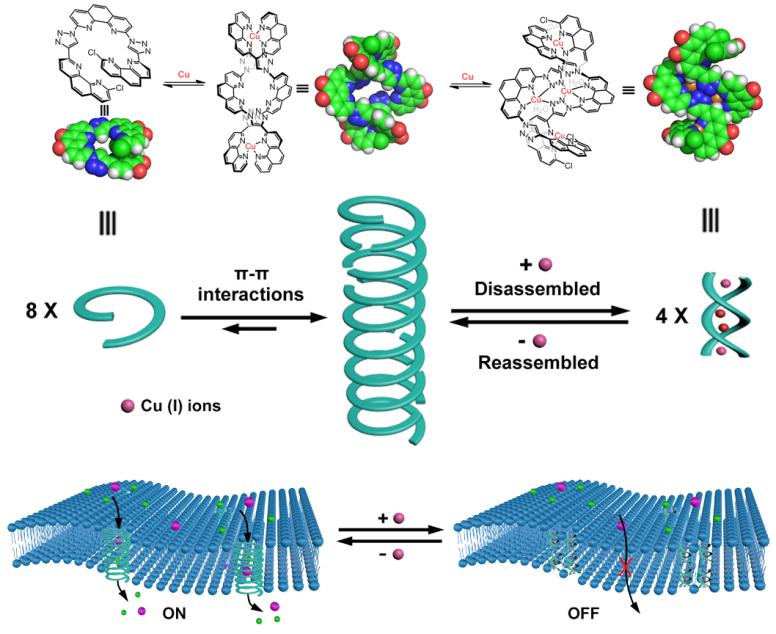Recently, the research progress related to intelligent ion channel from Dr. Junyan Zhu was published in the top journal of Angewandte Chemie International Edition (IF=12.257) in chemical field, entitled “Reversible Ligand-Gated Ion Channel via Interconversion between Hollow Single Helix and Intertwined Double Helix” (DOI: 10.1002/anie.201916755).
Natural gated ion channels implement their transport processes in a controllable manner, which play a vital role in a wide range of biological processes. Ligand responsiveness is one of the typical mechanisms in biological organization to trigger sophisticated channel switching. Inspired by this, we report a new type of helical trimer which can undergo transition between a hollow single helix and an intertwined double helix with no cavity by complexation and decomplexation of Cu ions. In addition, the one dimensional (1D) hollow helical tubes spontaneously generated from single helices via pi-pi interactions embedded into the lipid bilayers and displayed satisfactory channel stability and efficiency. With the addition of Cu (I) ions and further extraction with ammonia, the disassembly and reassembly of 1D hollow helical tubes gave rise to the reversible switching of channel activity in situ inside the bilayers. The synthetic helical system provides the first model of reversible ligand-gated ion channel by means of dynamic transition between single and double helices, which will be available for developing intelligent artificial nanochannels for potential biological and medicinal applications. The postgraduate student of Dongya Bai from the college of chemistry and chemical engineering, is the first author. Dr. Junyan Zhu is the first corresponding author and Henan University is the first signature institution.
This research is supported by the National Natural Science Foundation for Youth, Henan University Cultivation Foundation for Outstanding Youth, Chemistry and Chemical Engineering Outstanding Young Talent Support Program. We also thank the strong support from College of Chemistry and Chemical Engineering and Henan Engineering Laboratory of Flame-Retardant and Functional Materials.
The link to this article: https://doi.org/10.1002/anie.201916755



